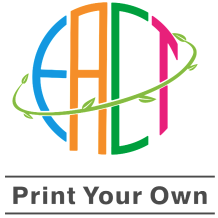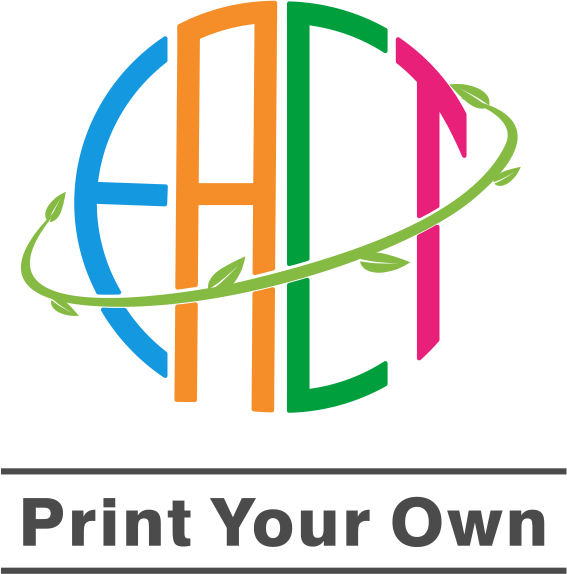Digital vs Traditional Fabric Printing: Which One Suits Your Needs?
Imagine holding a piece of fabric with bright colors and intricate patterns. Have you ever stopped to think about how such intricate designs are applied to textiles? Traditional fabric printing methods have long been the industry standard, known for their reliability and cost-efficiency, especially when it comes to large-scale production. But in recent years, the rapid rise of digital custom fabric printing service has transformed the way we create and customize fabrics. So, what is the real difference between digital printing and traditional printing? More importantly, how can you figure out which printing technique best suits your unique needs?
In this blog, we’ll explore the key differences between digital and traditional fabric printing, analyzing their pros and cons to help you make the best choice.
One of the most attractive features of digital printing is its ability to produce complex, multi-color patterns without the need for physical screens or plates. That's why digital print fabrics are perfect for personalized items in small to medium quantities.
No Minimum Order Requirements: Unlike traditional printing, which requires expensive screen setup, digital printing is cost-effective even for small production runs.
Faster Shipping: Since there is no need for screen preparation, digital printing can significantly reduce delivery times.
Environmental Benefits: Digital printing generally uses less water and produces less chemical waste.
Design Flexibility: Colors and designs can be modified easily and quickly.
Fabric Customization: Using digital printing technology, designers can fully customize fabrics with intricate patterns, vibrant colors and personalized designs.
Equipment Investment: The initial cost of digital printing equipment can be high, but these costs are usually borne by the service provider.
Though less flexible than digital printing, traditional methods excel in large-scale production, where economies of scale bring down costs and enable rapid output.
Unique Texture and Effects: For example, screen printing allows for thicker ink deposits, creating tactile textures that are not possible with digital printing.
Variety of Inks: Certain pigments used in traditional printing provide excellent durability and special finishes.
Limited Customization: Each color change means new screens, restricting design flexibility.
Environmental Impact: Traditional methods usually consume more water and chemicals.
Minimum Order Constraints: Small batches can be prohibitively expensive due to setup overhead.
Order Size and Budget
If your project involves small or customized batches, digital printing is often more affordable and practical. On the other hand, if you need to produce thousands of yards, traditional printing usually offers a better cost-per-yard ratio.
Design Complexity
Digital printing excels with complex, multi-color or photographic designs that require precision and color gradients. Traditional printing is suitable for simpler, repetitive patterns with fewer colors.
Time and Flexibility
Need rapid turnaround or frequent design changes? Digital printing allows for quick adjustments and shorter lead times. Traditional printing has long setup times and low flexibility after the screen is made.
Environmental Considerations
If you prioritize sustainability, digital printing may align more closely with your environmental goals.
In this blog, we’ll explore the key differences between digital and traditional fabric printing, analyzing their pros and cons to help you make the best choice.
Digital Fabric Printing
Digital fabric printing uses inkjet technology to directly apply designs onto textiles, just like printing images on paper. This innovative technique produces sharp, detailed prints that capture creative visions with stunning precision.One of the most attractive features of digital printing is its ability to produce complex, multi-color patterns without the need for physical screens or plates. That's why digital print fabrics are perfect for personalized items in small to medium quantities.
Advantages of Digital Printing
Precision and Detail: Digital printing can produce complex patterns and smooth gradients with high precision.No Minimum Order Requirements: Unlike traditional printing, which requires expensive screen setup, digital printing is cost-effective even for small production runs.
Faster Shipping: Since there is no need for screen preparation, digital printing can significantly reduce delivery times.
Environmental Benefits: Digital printing generally uses less water and produces less chemical waste.
Design Flexibility: Colors and designs can be modified easily and quickly.
Fabric Customization: Using digital printing technology, designers can fully customize fabrics with intricate patterns, vibrant colors and personalized designs.
Limitations of Digital Printing
Material Compatibility: Some fabric types and finishes may not be well-suited for digital inks or require special treatments.Equipment Investment: The initial cost of digital printing equipment can be high, but these costs are usually borne by the service provider.
Traditional Fabric Printing
Traditional fabric printing methods, such as screen printing, rotary printing and block printing have been the industry standard for many years. These technologies apply ink to fabric through a solid screen or cylinder.Though less flexible than digital printing, traditional methods excel in large-scale production, where economies of scale bring down costs and enable rapid output.
Advantages of Traditional Printing
Cost-Effective for Large Runs: Once screens are prepared, printing large quantities becomes more economical.Unique Texture and Effects: For example, screen printing allows for thicker ink deposits, creating tactile textures that are not possible with digital printing.
Variety of Inks: Certain pigments used in traditional printing provide excellent durability and special finishes.
Disadvantages of Traditional Printing
High Initial Setup Costs: Creating screens or plates requires time and money, making it impractical for small orders or frequent design changes.Limited Customization: Each color change means new screens, restricting design flexibility.
Environmental Impact: Traditional methods usually consume more water and chemicals.
Minimum Order Constraints: Small batches can be prohibitively expensive due to setup overhead.
Which Printing Method Fits Your Needs?
Choosing between digital and traditional fabric printing depends on several key factors related to your project goals.Order Size and Budget
If your project involves small or customized batches, digital printing is often more affordable and practical. On the other hand, if you need to produce thousands of yards, traditional printing usually offers a better cost-per-yard ratio.
Design Complexity
Digital printing excels with complex, multi-color or photographic designs that require precision and color gradients. Traditional printing is suitable for simpler, repetitive patterns with fewer colors.
Time and Flexibility
Need rapid turnaround or frequent design changes? Digital printing allows for quick adjustments and shorter lead times. Traditional printing has long setup times and low flexibility after the screen is made.
Environmental Considerations
If you prioritize sustainability, digital printing may align more closely with your environmental goals.

 USD
USD



